12 pm, August 25, 2020
Invited Speaker: Anton Lukyanenko, GMU Mathematical Sciences Department
Topic: Quantum Algorithms for Optimal Path Finding
Location: Zoom
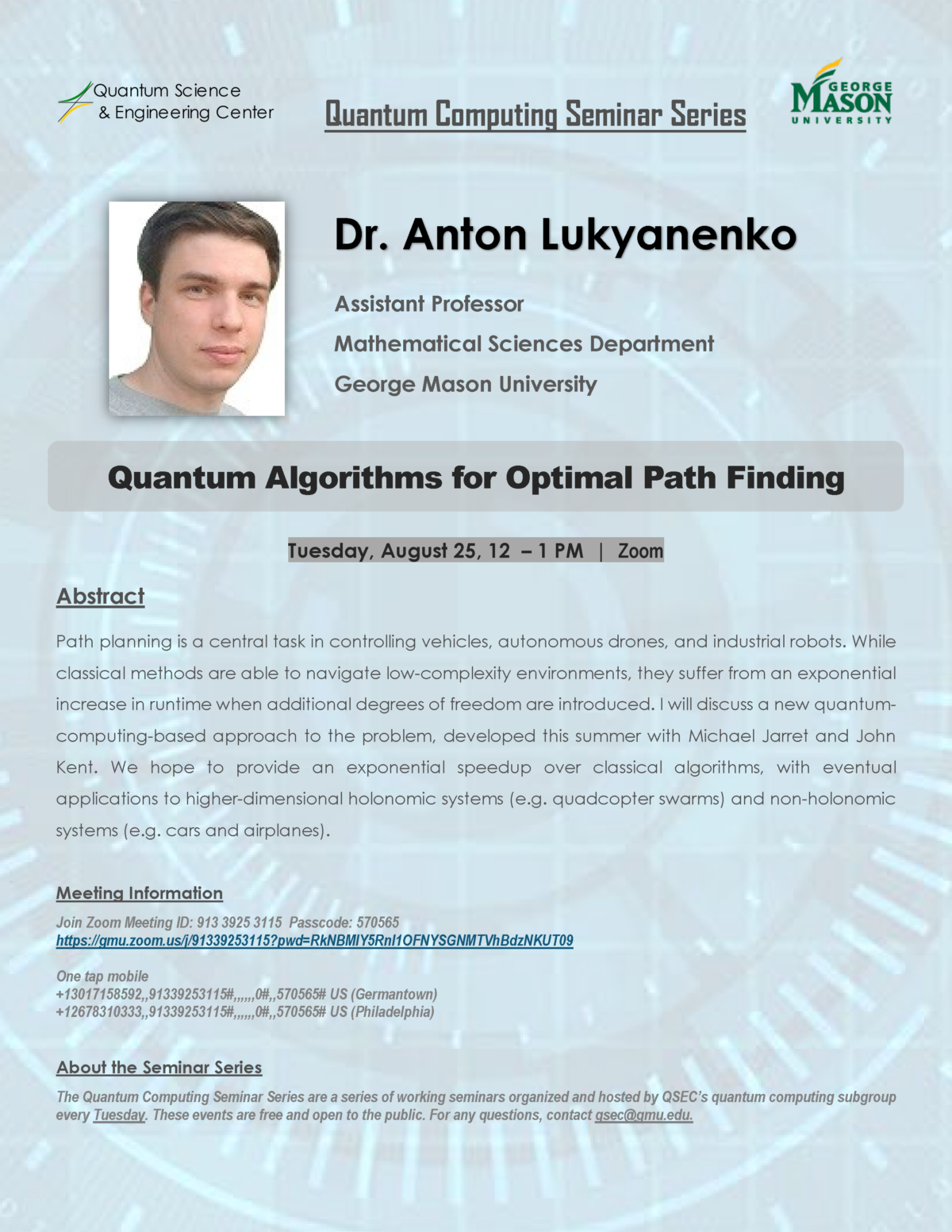
Topic: Quantum Algorithms for Optimal Path Finding
Location: Zoom
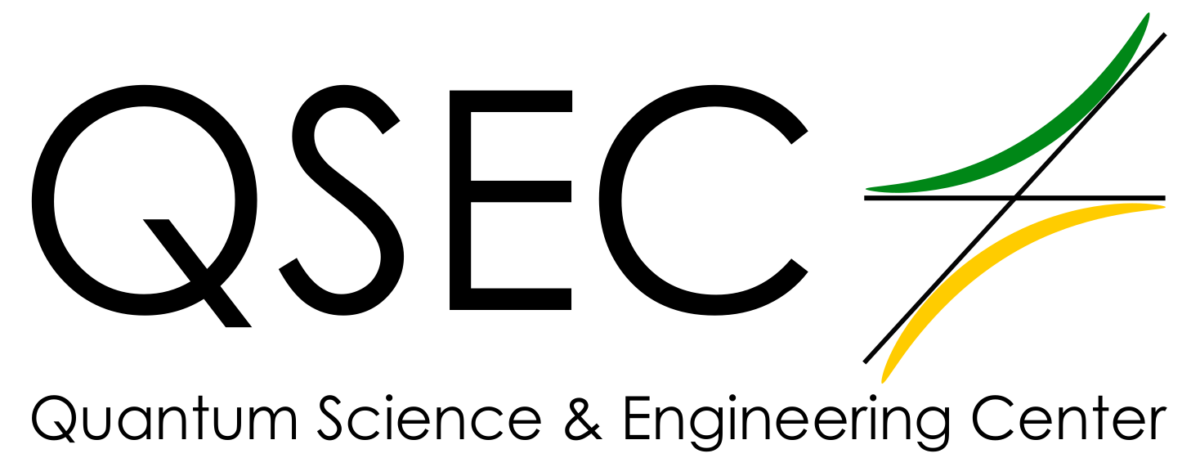
Mason’s Quantum Material Center (QMC), one of the four Transdisciplinary Centers for Advanced Study supported by the Provost Office of Research, is now officially Quantum Science and Engineering Center (QSEC).
QSEC was established in February 2018 and has grown beyond its roots as a materials science organization to a community of Mason scientists and engineers interested in advancing quantum technology. Our members focus on creating quantum algorithms for quantum computing, constructing ultra-sensitive quantum sensors, designing and discovering quantum materials for new computing technologies, and building training programs to prepare Mason students for a technological workforce that will increasingly require a knowledge of quantum science and engineering.
QSEC will continue supporting the exploration of these high-risk high-reward ideas by fostering a collaborative, interdisciplinary, community-focused environment at Mason where some of the most challenging problems in quantum can be freely explored in new ways through convergent research. This provides a unique environment and access for graduate students, undergraduate students, and postdoctoral researchers to make transformative contributions to quantum technology. Seeking to accelerate the second quantum revolution by combining the efforts of physicists, mathematicians, computer scientists, and engineers, QSEC pursues these goals in collaboration with industrial partners, government organizations, and national consortia.
For more information, please explore our website to learn more about our efforts in quantum research and education.
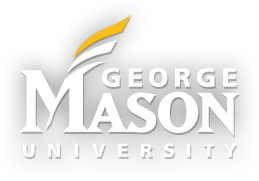
Exploratory Hall room 3301
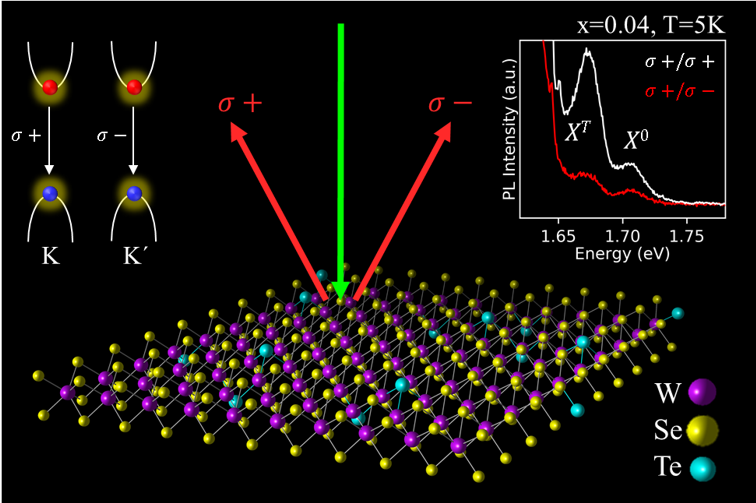
Fairfax, VA, 2/1/2020.
QMC member Dr. Patrick Vora and student Sean Oliver have recently published their work of Valleytronics in 2D Phase Change Materials, Valley phenomena in the candidate phase change material WSe2(1-x)Te2x, doi:10.1038/s42005-019-0277-7, on Communications Physics.
Valleytronics and neuromorphic computing are under heavy investigation as next-generation information processing technologies. In valleytronics information is stored and manipulated by moving carriers between energy band extrema (i.e., valleys) in momentum-space. Achieving this requires a material where carriers can be selectively populated in individual valleys and manipulated on demand. In this work, the team explored the possibility of achieving a single material, e.g. 2D transition metal dichalcogenide alloys, where both valleytronic and neuromorphic functionality can be combined. Their result shows that both valley polarization and valley coherence remain large in their alloy, which also appear to host valley-polarized excitons that are more resistant to phonon-induced depolarization mechanisms. This implies that at elevated temperatures alloys may outperform pure WSe2 in valleytronic applications.
According to Dr. Vora, these results are the first systematic examination of valley properties in 2D phase change materials and point to a new class of devices where valleytronics can be utilized in concert with phase change elements in hybrid next-generation computing architectures.
For more information please see the recent publication in Communications Physics or visit the Vora Lab.
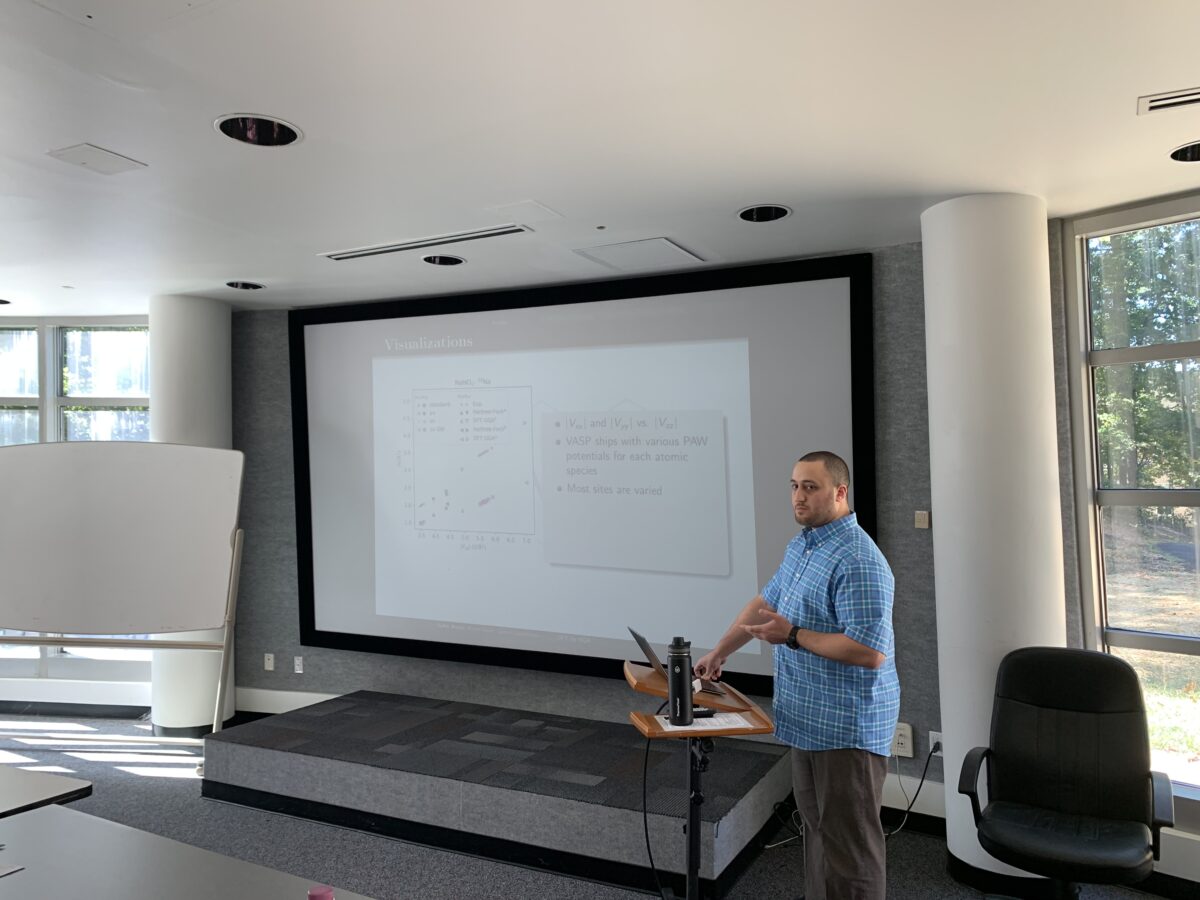
Fairfax, VA, October 17, 2019
Last week, the Quantum Materials Center (QMC) hosted their first student seminar that allows graduate students and postdocs to present their research to the members of the QMC for feedback and review. This seminar was the first in the QMC’s student speaker series. The experience allows students to gain valuable understanding on presenting and refining their research for future endeavors. The speaker at this seminar, Mr. Jaafar Ansari, is a graduate student who is pursuing a M.S in Computational Sciences and Informatics and is looking to continue into his doctoral studies in 2020. He works closely under Dr. Karen Sauer, a founding member of the QMC, to both assist her with research as well as continuing his own. He presented his paper, “Using DFT to Determine NQR Frequencies”, to members and students of the center. The recently published paper for the same work presented can be found here.
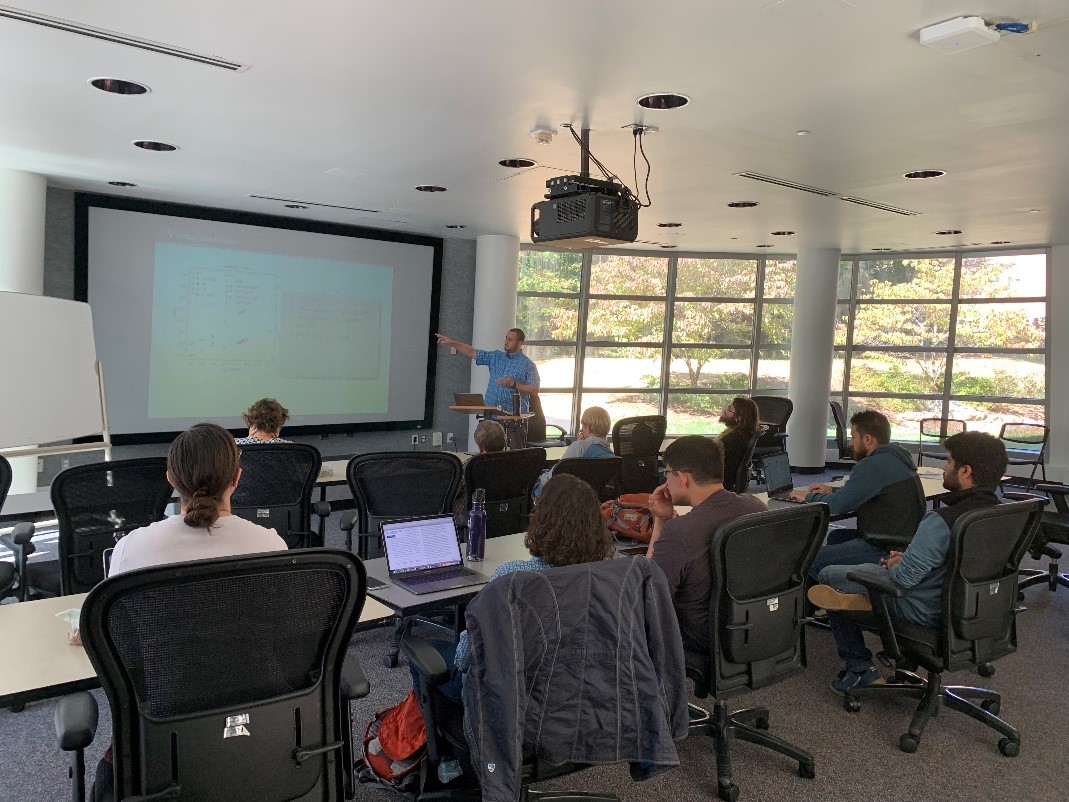
For more information about the QMC, please visit qsec.gmu.edu
Fairfax, VA, October 16, 2019
After collaborating with the Quantum Materials Center (QMC) for more than a year, Dr. Igor Mazin joined the cohort of the QMC. He will begin his position as Professor of Practice in Advanced Studies in Theoretical Physics in the Department of Physics at George Mason University (GMU) later this semester. His research interests lie in electronic structure, conventional and unconventional superconductors, frustrated and noncollinear magnetism, two-dimensional van-der-Waals systems, among others. Originally from Moscow, Russia, Dr. Mazin received his Ph.D. at the P.N. Lebedev Physical Institute in 1984. His research led him to work at the Naval Research Lab where he had been working for twenty years, having published 180 papers there, which have accumulated 15000 citations. He is best known for unraveling the nature of superconductivity in MgB2 and in Fe-based superconductors. For these works, he was awarded the prestigious John Bardeen Prize. He is a fellow of the American Physical Society and on the editorial board of Physical Review X and of the Nature Partner Journal “Quantum Materials”. His drive adds to the dynamic environment of the QMC and he will be working alongside colleagues at GMU to work on Quantum Metamaterials.
For more information about the QMC, please visit qsec.gmu.edu.
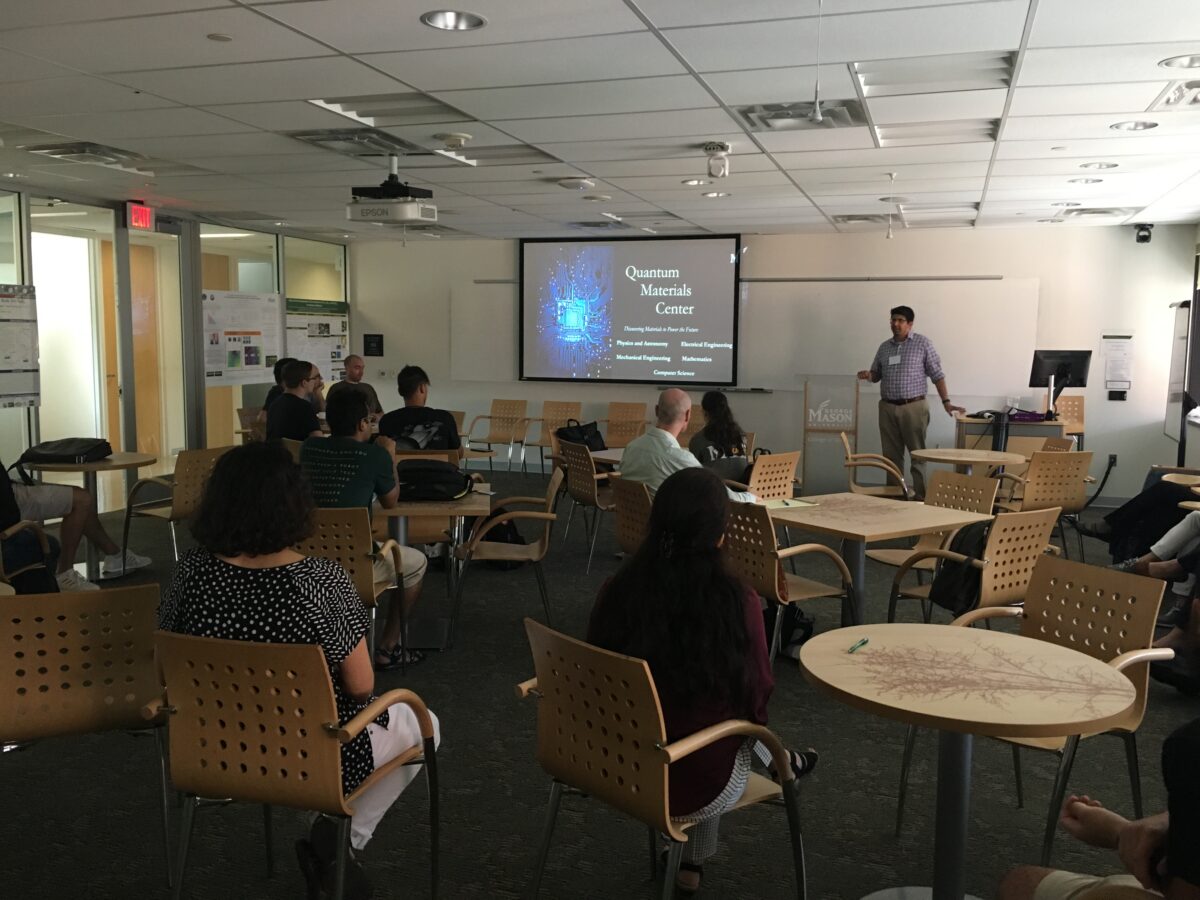
Fairfax, VA, September 5, 2019
The Quantum Materials Center (QMC) recently held a Launch Event and Poster Session. Established as one of two new Transdisciplinary Centers for Advanced Study supported by the Provost Office of Research, the QMC merges the expertise of GMU scientists from the physics, engineering, and data science departments to develop a unified approach to materials discovery and exploration for the realization of quantum electronics technologies that outperform the present state-of-the-art. This launch event was intended to connect members and students of the center and to promote interdisciplinary communication. Over 6 faculty members and 20 students from across the Physics, Math, and Engineering departments attended the event.
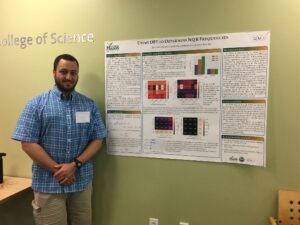
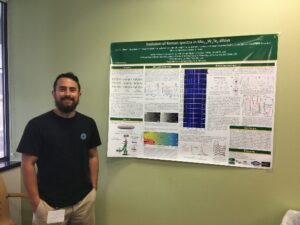
For more information about the QMC, please visit qsec.gmu.edu.
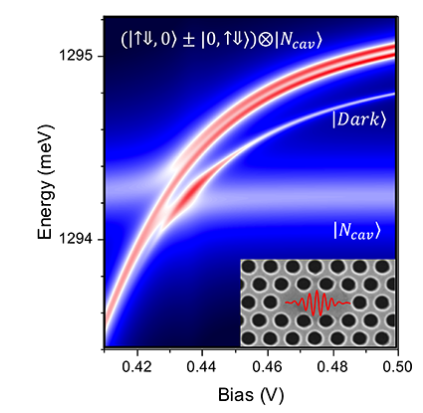
Dr. Vora has just published collaborative work with the Naval Research Laboratory in Physical Review B!
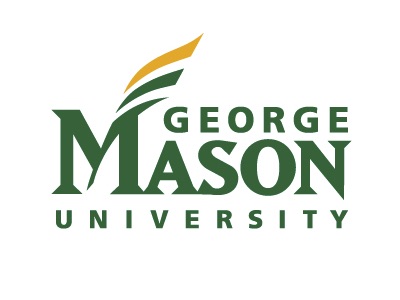
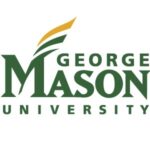
The GMU physics and astronomy department is seeking applicants for a tenure-track assistant professor position in experimental condensed matter physics.
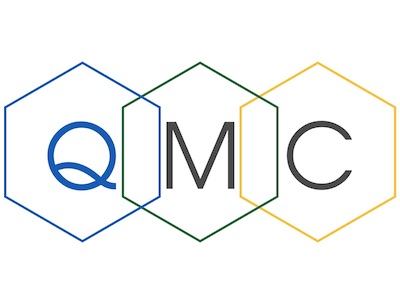

The creation of the QMC launches a new research area for GMU in the discovery and utilization of quantum materials in technology.
